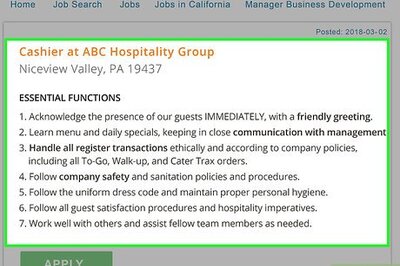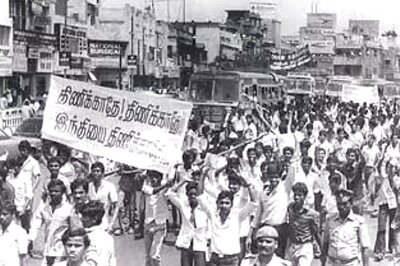
views
New Delhi: A dispute that has been confined to the four walls of several courtrooms over the past five decades would now be before a panel of mediators who would attempt to find a "permanent solution" to the Ram Janmabhoomi-Babri Masjid dispute.
A Constitution Bench of the Supreme Court has referred the Babri dispute to mediation where a panel of three mediators, headed by Justice (Retd) FMI Kalifulla, will decide whether there can be a solution apart from a court verdict. The mediation is set to take place in Faizabad.
But how does mediation work in India and what are the steps that could yield a possible solution to this several decade old dispute.
What is Mediation?
When the SC constitution bench pondered upon mediation being a possible solution to Ayodhya land dispute, the only factor which matter was a chance of settlement between the parties. Former Chief Justice JS Khehar too had attempted this when he had said “give some, take some” to parties to settle the dispute.
Mediation is an alternative method of resolving disputes without resorting to the courts. It is a structured, voluntary and interactive negotiation process where a neutral third-party uses specialized communication and negotiation techniques to help the parties in fulfilling their stated objectives. As a party-centred process, it focuses on the interests, needs and rights of the parties.
What are the laws that govern mediation in India?
Mediation first came to be legally recognized as a method of dispute resolution in the Industrial Disputes Act, 1947.
However the Supreme Court in the Babri dispute has referred to Section 89 of the Code of Civil Procedure, 1908 which allowed the courts to refer to alternative dispute resolution (ADR) methods to settle pending disputes.
Under this, consent of the parties was made mandatory and the court could refer cases for arbitration, conciliation, judicial settlement through Lok Adalat, or mediation.
But considering a faction of the Hindu Mahasabha had strongly opposed mediation, the court has relied on the Civil Procedure- Mediation Rules, 2003 which provides for mandatory mediation under r. 5(f)(iii). These allow the court to refer cases for mediation even when the parties are not ready for reference for mediation if there is an element of settlement.
Why is this a court annexed mediation process?
Under Court-Annexed Mediation, the mediation services are provided by the court as part of the judicial system.
The Court maintains a list of skilled and experienced mediators who are available to the parties. The Court appoints a mediator and sets a date by when the mediation must be completed. The results of the mediation are confidential, and any agreement reached is enforceable as a judgement of the court.
Since the case is referred to a court-annexed mediation service, the overall supervision is kept on the process and there is no feeling of abandonment by the system. The litigants, lawyers and judges become participants in the system and it is felt that the settlement is achieved by all the actors in the justice delivery system.
The same lawyers who appeared in the case represent their clients before a mediator and the litigants are also allowed to participate.
What are the steps in this process that needs to be completed in this process beginning March 15?
As the mediation process is set to begin on March 15, the panel of mediators headed by Justice Kalifulla has to ensure that the parties and their counsels are present at the commencement of the mediation process.
The mediator gives an introduction with his qualifications, establishes his neutrality and reposes faith in the mediation process.
The mediator requests the parties to introduce themselves, attempts to develop a rapport with them and gain their confidence and trust.
The motive is to create a constructive environment conducive to negotiations and motivate the parties for an amicable resolution of disputes.
The mediator confirms that the parties have understood the process and gives them the opportunity to get any doubts clarified.
Statements are also sought from the negotiators. The parties articulate their positions, enabling the other party to understand what they want.
This is followed by a restatement of the problem by the mediator where an attempt is made to incorporate the differing perspectives.
The agenda is set thereafter followed by the mediator providing an opportunity for the parties to hear and understand each other’s perspectives, relationships and feelings.
The petitioner is allowed to explain their case in their own words, followed by the presentation of the case by their counsel and the statement of the legal issues. Similarly, the defendant is allowed to explain their case, followed by the presentation of the case and statement of the legal issues involved by the defendant’s counsel.
After the joint session, mediator also holds separate sessions. It provides the parties with a forum to further vent their feelings and disclose confidential information they do not wish to share with the other parties.
Mediator also asks effective questions and helping the parties understand the strengths and weaknesses of their cases.
How is a settlement arrived at?
He mediator helps the parties to understand the reality of their situation and give up rigid positions, the mediator creates creative options for settlement.
The parties negotiate through the mediator until a solution mutually acceptable to all the parties involved. The mediator directs the parties to a solution which he believes will satisfy the underlying interests of the parties.
In case mediation fail, the case would be sent back to the referral court, i:e, the supreme court.
The mediator orally confirms the terms the terms of the settlement as a procedural requirement. The parties, with the mediator’s aid, write down the terms of the settlement and sign the agreement. The settlement has the binding nature of a contract and is enforceable in a court of law.
In his closing comment, the mediator thanks the parties for their help and participation in the mediation process.
Is the process confidential?
Process of Mediation in India is completely confidential as any information furnished by any party and a document prepared or submitted is inadmissible and sealed. Any admission made during mediation cannot be used in any other court case and any information provided to the mediator cannot be disclosed to the other party unless the other party specifically permits the mediator to do so. The mediator cannot be called as a witness to testify in any court case and cannot disclose any information related to the proceedings.




















Comments
0 comment